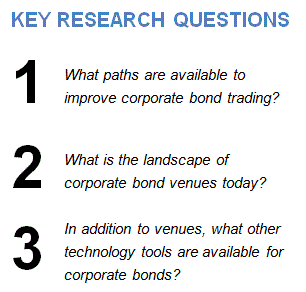US Corporate Bond Trading Technology Update: The End of the Beginning
Abstract
In the trading of corporate bonds, there are forces driving change. We give an overview of these forces and assess how they are fundamentally driving a move toward increased electronic trading and increased automation in the multi-dealer to client space.

In the report US Corporate Bond Trading Technology Update: The End of the Beginning, Celent examines the forces at play and the innovation taking place in corporate bond trading.
The headwinds of increased regulation, stricter capital regimes, and regulatory-mandated shedding of businesses, all occurring within a volatility-dampened world, have produced tremendous pressures on the infrastructure of the corporate bond market. All this is happening against a backdrop of diverging forces, in respect to continued robust, record issuance, while secondary trading becomes more challenging.
“Forces are at play that could eventually cause a great deal of pain for the holders of corporate debt. The corporate bond market has evolved in a way where reliance on sell side liquidity provision has been paramount,” said Brad J. Bailey, Research Director at Celent. “While request-for-quote (RFQ), as a natural extension of existing workflows, remains a dominant protocol for trading corporate bonds, other trading protocols are being driven by players that find their ability to access liquidity at risk.”

